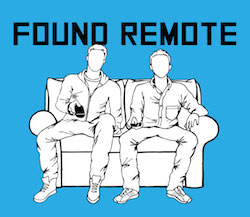A new U.S video trends report released today by AOL shows that 83% of advertisers plan to increase their video ad spend this year, and of the advertisers shifting spend away from broadcast and cable TV, 72% are moving it to digital video.
The opportunities for advertisers and publishers in the digital video space have greatly expanded over the past two years, and both parties expect 360 video and VR to become major revenue drivers. It’s now up to advertisers and publishers to find ways to put out content that consumers want to engage with.
“The best way to take advantage of advertising opportunities on innovative formats is to collaborate with a partner who is going to be strategic about using the technology,” Alia Lamborghini, SVP of Sales, East, AOL, told Found Remote. “You want to build a brand people love, not just jump on the latest tech because it’s cool. First make sure your particular audience has an appetite for it (otherwise, what are you investing in?). Second, ensure whatever campaign you run tells a story that speaks authentically to your brand’s voice. Consumers are too savvy to be swept away by a video just because it’s in a new format — be genuine.”
Even savvy consumers, though, are willing to sit through ads – with caveats. 71% of consumers said that they don’t mind ads if they are entertaining, and 77% said that they rather watch one longer ad rather than several shorter ones served throughout a video experience.
“Consumers tend to prefer longer ads when they’re viewing long-form, TV-like content, but shorter ads when viewing shorter, clip-like content,” said Matt Gillis, SVP, Publisher Platforms, AOL. “The goal for publishers is to create a strong consumer experience that aligns with the type of content being consumed. One way they can do so is to have an integrated video player-monetization solution, which allows for less latency, a smoother experience and high-quality ad spots that lead to more usage and engagement.”
While the AOL of old was the premiere internet portal, more and more consumers are discovering content via search, social, and recommendations than directly on publisher websites. This means that publishers have to find new mediums to surface and monetize content.
“Off-platform monetization is a growing opportunity, but can be challenging for publishers as they have little to no control over how their content is represented or monetized,” said Gillis. “In turn, publishers are beginning to pull inventory from some walled gardens like Facebook’s Instant Articles. Publishers need a distribution strategy that aligns their off-platform consumer experience with their on-platform experience. The key is to partner with platforms that bring not only scale, but openness, transparency and the ability to control how content is displayed and monetized.”





















